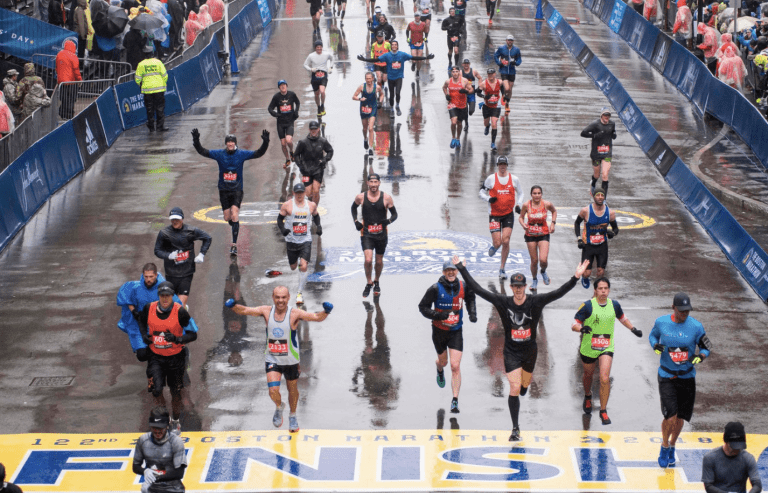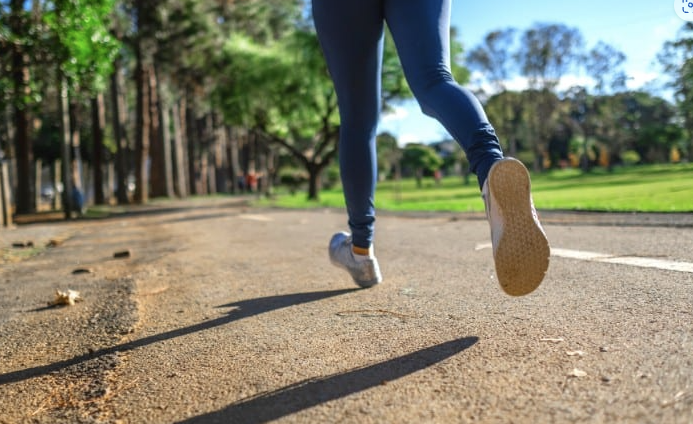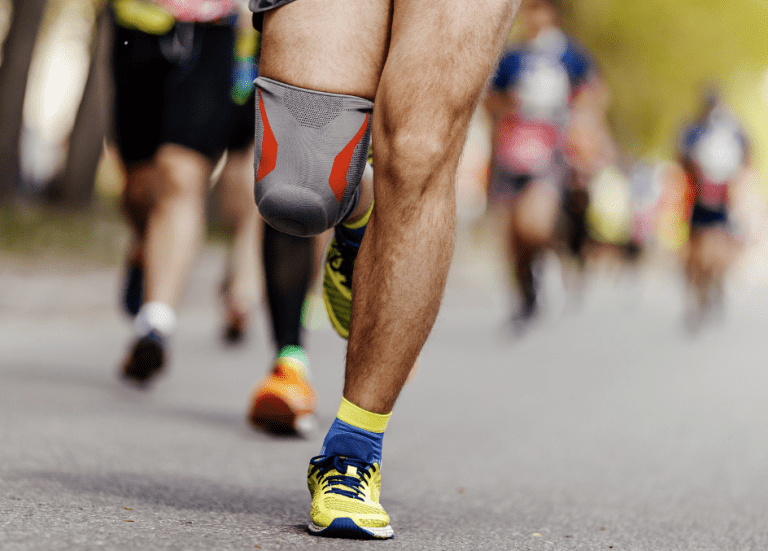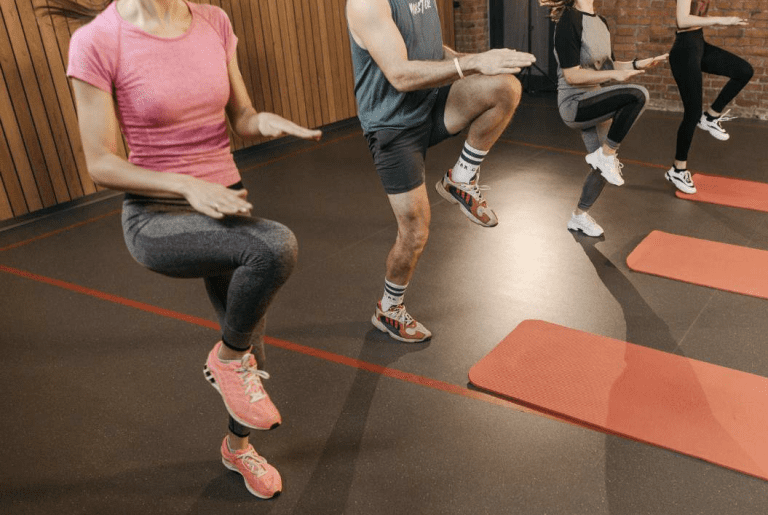What is the duration of running one mile? This question is common among both beginner and experienced runners. However, the answer to this question varies depending on many factors.
Your average mile time can be influenced by numerous factors including your physical condition, age, gender and running experience. In this blog post, we will explore the various factors influencing average mile time and provide tips to help both beginner and advanced runners improve their performance.
We’ll also provide tips for beginner runners on how to increase their mileage gradually and the importance of strength training in improving stamina. For advanced runners, we will explore performance metrics such as lung capacity & hemoglobin levels that play crucial roles in achieving faster mile times.
Fine-tuning techniques like breathing patterns and stride length can significantly enhance your running speed too. And let’s not forget the impact of choosing the right running shoes! Lastly, we’ll discuss how age affects athletic performance and why men tend to have faster averages than women.
Whether you’re aiming for a marathon pace or just trying to build endurance for longer runs – understanding how long it takes to jog a mile depends on many variables that are unique to each individual runner.
Understanding the Average Time to Jog a Mile
The factors that can influence the average time to jog a mile include physical condition, age, and gender. This includes your physical condition, age, and gender. For instance, data from Strava, a popular fitness app among runners worldwide suggests that most runners complete a mile in approximately 9:53 minutes during longer runs.
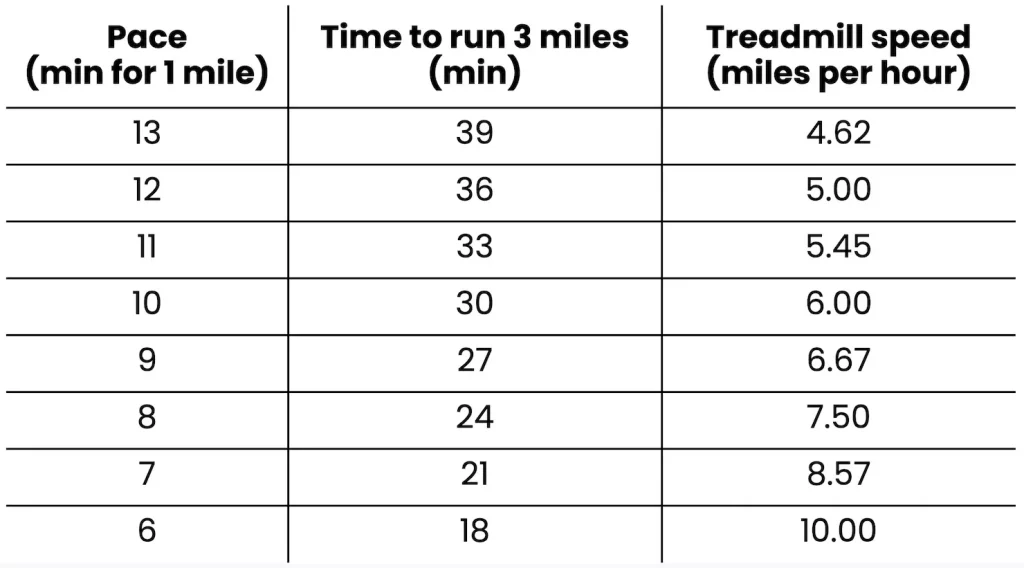
However, according to Running Level – another trusted source for running enthusiasts – an impressive target for men should be around 7:04 minutes per mile (4:49 minutes per kilometer), while women should aim for about 7:44 minutes. These figures give us some insight into what is considered ‘average’ or ‘good’, but remember these are just averages and individual times can differ quite significantly.
How Physical Condition Affects Your Mile Time
Your bodily state can be a deciding factor in how long it takes to run one mile. If in good shape, with a sound cardiovascular system and strong muscles, one is likely to be able to keep up faster paces for more extended periods than someone who’s less active or has health issues.
A strong core also helps maintain proper form during jogging which leads to more efficient movements thus saving energy allowing quicker times. Include exercises such as planks, crunches and leg raises to complete your workout routine. as part of your workout routine.
Impact of Age and Gender on Jogging Speed
In addition to physical conditioning, both age and gender have been found to influence jogging speed. As we get older, our body naturally begins to lose muscle mass and slows down metabolism leading to a slower pace. Similarly, biological differences between males and females such as a higher percentage of body fat in women tend to make them slightly slower than their male counterparts when it comes to jogging the same distance. However, this doesn’t mean that women cannot achieve impressive timings – many elite female athletes consistently outperform men in various races across the globe.
The article discusses the average time it takes to jog a mile, which can vary depending on factors such as physical condition, age, and gender. It is important to maintain good cardiovascular health and muscular strength through exercises like planks and crunches for efficient movements while jogging. Age can lead to slower paces due to muscle loss and slowed metabolism, while biological differences between males and females may also affect jogging speed.
Tips for Beginners
For those just starting out on their jogging journey, there are steps to take to maximize performance and make the experience more enjoyable. But don’t worry, there are ways to improve your performance and make your runs more enjoyable.
Gradually Increase Your Mileage
Consistency is key when building endurance and speed. Start with what feels comfortable and gradually increase your distance each week. This allows your body to adapt without getting overwhelmed, reducing the risk of injury while enhancing overall fitness levels. Check out this article for more tips on increasing your mileage.
Strength Training is Key
Incorporating strength training into your workout regimen can significantly boost performance by improving muscle power and joint stability. Exercises like squats, lunges, planks, or push-ups work wonders for strengthening core muscles, which play a crucial role in maintaining good form during runs. According to a study published by The Journal Of Strength And Conditioning Research, runners who included strength training saw improvements in their running economy.
Remember:
- Pace Yourself: Don’t feel pressured to match someone else’s pace when starting out. Everyone has different capabilities based on factors like age and physical condition, so focus on finding what works best for YOU.
- Mix It Up: To prevent boredom, try mixing things up occasionally. Explore new paths, alternate between flat and hilly terrains, and add variety to your workouts to keep things interesting and develop well-rounded athleticism.
It’s critical to stay within your means, heed the signs from your body, and avoid harm while still making steady progress toward objectives. It’s essential to bear in mind that pleasure and self-development are just as vital, if not more so, than the actual times recorded on a stopwatch.
Advanced Runners’ Performance Metrics
As an advanced runner, you’re probably faster than a cheetah on steroids. On average, seasoned runners can clock in around eight-and-a-half-minutes per mile. This impressive speed comes from several factors that enhance athletic performance.
Role of Lung Capacity & Hemoglobin Levels in Achieving Faster Times
Lung capacity plays a significant role in determining how fast one can run. Exercising intensively on a regular basis can result in an enlargement of lung capacity, thereby leading to improved running performance and faster times. Studies have shown that regular intensive workouts can increase lung volume and thus improve running performance.
In addition to this, hemoglobin levels also impact jogging speeds significantly. Hemoglobin carries oxygen from the lungs to the rest of the body’s cells – including those used when running. Higher hemoglobin levels mean more efficient oxygen transportation and subsequently improved athletic performance. Research has found that athletes tend to have higher hemoglobin concentrations than non-athletes due to their rigorous training routines.
Importance of Regular Intensive Workouts In Enhancing Cardiovascular And Muscular Strength
The importance of regular intensive workouts cannot be overstated when it comes to improving jogging times for advanced runners. These types of exercises help build cardiovascular strength by forcing your heart and lungs to work harder over extended periods – thereby increasing their efficiency over time.
- Hill sprints: Running uphill forces you against gravity making your muscles work harder; hence strengthening them while simultaneously boosting cardiorespiratory fitness.
- Speed drills: This involves alternating between high-intensity bursts with slower recovery phases within a single workout session. It helps develop both aerobic and anaerobic systems crucial for enhancing overall speed and stamina.
- Long-distance runs: A staple in any serious runner’s routine, these not only boost cardiovascular health but also mental toughness – a key component in achieving faster miles.
Besides building up cardiovascular strength, these workouts also contribute towards muscular strength, especially in the lower body, which directly affects stride length and power output during each step taken while jogging. Resistance training has been shown to improve economy, thereby resulting in quicker paces.
The article discusses the factors that contribute to an advanced runner’s ability to jog a mile faster, including lung capacity and hemoglobin levels. Regular intensive workouts such as hill sprints, speed drills, and long-distance runs are essential in enhancing cardiovascular and muscular strength, which can lead to improved jogging times. Resistance training is also beneficial for improving economy and achieving faster times.
Fine-Tuning Techniques to Improve Performance
For optimal performance, jogging technique is just as crucial as fitness level. Equally important are the techniques you use while running. Perfecting your approach can make a huge impact on how quickly you are able to finish that mile and in what manner.
Breathing Technique for Efficient Running
Proper breathing technique is crucial for efficient running. It’s all about rhythm and consistency – inhaling and exhaling at regular intervals helps maintain oxygen supply to your muscles, preventing fatigue during long runs. Runner’s World suggests practicing belly breathing or diaphragmatic breathing where you breathe deep into your lungs rather than shallow chest breaths.
Significance of Stride Length and Pacing in Jogging
Your stride length and pacing also play a vital role in improving your jogging time. A longer stride might seem like it would help cover more ground faster, but overstriding can lead to injuries due to increased stress on knees and ankles. Instead, focus on increasing cadence (the number of steps taken per minute) without necessarily extending stride length too much.
Pacing refers to maintaining consistent speed throughout the run instead of starting out fast only to slow down significantly towards the end – this strategy often results in better overall times. Active provides an excellent guide on how proper pacing can improve endurance and race times.
Choosing the Right Shoes for Better Performance
If you’re a new runner, investing in proper shoes could prove beneficial. The right pair not only offers comfort but also aids performance by providing adequate cushioning, stability, and flexibility needed for different types of terrain encountered during a jog. REI Co-op’s guide suggests considering factors such as foot shape and gait type when choosing the perfect shoe. Remember, though, ultimately what feels best is the most important factor in deciding which shoes to buy. So take the time to try a few pairs before making a decision.
Remember, fine-tuning these techniques takes practice, so don’t be discouraged if improvements aren’t immediate – keep at it. As with any skill worth mastering, patience and persistence are key to achieving desired results.
This section provides tips for improving jogging performance by fine-tuning techniques such as breathing, stride length and pacing. Choosing the right shoes is also important to aid in comfort and performance during different types of terrain encountered while jogging. Patience and persistence are key to achieving desired results when practicing these techniques.
Understanding The Impact Of Age On Athletic Performance
It’s a well-acknowledged reality that advancing age can have an extensive influence on sports performance. This is particularly true when it comes to activities requiring endurance and speed, such as jogging. As we age, our physical abilities are altered due to physiological changes.
Changes in Muscle Fibers With Aging
The first major change has to do with the muscle fibers in our bodies. Our muscles are made up of two types of fibers: fast-twitch and slow-twitch. Fast-twitch fibres, which provide strength and power for short periods of time, diminish with age while slow-twitch ones, used to sustain endurance activities like running or cycling, shrink in size too.
As we age, the number of fast-twitch muscle fibers diminishes, resulting in a decrease in explosive power – though regular exercise can help maintain healthier muscle mass. Additionally, both types of fiber become smaller which affects overall muscular strength and stamina. However, regular exercise can help counteract some of these effects by maintaining healthier muscle mass.
Why Men Tend To Have Faster Averages Than Women
Moving on from aging effects on individual performance let’s discuss gender differences in jogging times. It’s been observed that men tend to have faster averages than women when it comes to completing a mile jog. This isn’t due to any inherent superiority but rather physiological differences between genders.
Studies show that men generally have more lean mass (which includes muscles) and less body fat compared to women – this contributes towards higher speed potential. Moreover, men typically possess larger lungs which allows them to take deeper breaths, thereby supplying their muscles with more oxygen during strenuous exercises like jogging. (source)
In spite of all these factors, remember that everyone has their unique pace and progress. It’s important not to compare yourself to others, instead focus on improving your personal best time while remembering to enjoy the process too. Remember, enjoyment and personal growth matter just as much, if not more, than the actual numbers on the stopwatch.
The impact of age on athletic performance, particularly in activities requiring endurance and speed like jogging. As we grow older, our body undergoes several changes that affect our physical capabilities such as a decrease in the number of fast-twitch muscle fibers leading to reduced explosive power. Men tend to have faster averages than women due to physiological differences between genders but it’s important not to compare yourself with others and focus on improving your personal best time while enjoying the process too.
Listening to Your Body’s Signals While Pushing Limits
Heed your body’s warnings, no matter how experienced you are, to ensure safe and sustained progress towards achieving your objectives. This approach helps you avoid injury and maintain consistent progress towards your goals. Remember, relishing the experience and advancing your capabilities are as essential – if not more so – than keeping track of times.
Avoiding Injury While Challenging Yourself
The key to avoiding injuries while pushing yourself lies in understanding the difference between good pain (the burn from an intense workout) and bad pain (a sharp or persistent ache that could signal an injury). It’s important to know when to stop exercising if you feel discomfort beyond normal muscle fatigue.
- Warm up before workouts: A proper warm-up increases blood flow to muscles, enhancing flexibility, which can help prevent injuries.
- Cool down after workouts: Cooling down helps bring heart rate back gradually, reducing the risk of faintness or dizziness post-workout.
- Maintain proper form: Incorrect form during exercise can lead to strain or injury. Learning correct techniques for each exercise is essential for safety.
Balancing Enjoyment, Personal Growth, and Progress
Focusing solely on speed or distance might make jogging seem like a chore rather than an enjoyable activity. Incorporating elements of fun into runs, such as listening to music, exploring new routes, or running with friends, can keep motivation high.
- Jogging Goals: Your goals should be realistic based on current fitness levels but also challenging enough to inspire improvement. They may include increasing mileage, improving time mile, or other personal objectives related to health and wellness.
- Variety in Training: To prevent boredom and overuse injuries, mix up your training routine by including different types of exercises such as strength training and yoga alongside regular jogs. Variety keeps things interesting and promotes balanced muscular development and cardiovascular endurance.
Balancing running with strength training, for instance, enhances overall performance by building stronger muscles that support joints and reduce the risk of injury. Remember, balance is key – don’t let one type of exercise dominate others to the detriment of your overall fitness and wellbeing.
The article discusses the importance of listening to your body’s signals while jogging and pushing yourself within your limits to avoid injury. It also emphasizes the need for proper warm-up and cool-down routines, maintaining correct form during exercise, setting realistic goals, incorporating variety in training routine, balancing running with strength training for overall fitness and wellbeing. The key takeaway is that enjoyment and personal growth matter just as much as actual numbers on a stopwatch when it comes to jogging or any other physical activity.
FAQs in Relation to How Long Does it Take to Jog a Mile
How long does it take to jog a mile?
It takes about 9 to 10 minutes for a healthy adult with moderate fitness level. Learn more.
What is the average mile time for a 17-year-old girl?
The average mile time for a 17-year-old female is around 9:30 -10:00 minutes. Find out more.
How fast can Usain Bolt run a mile?
Usain Bolt’s estimated mile time is approximately 4:20, based on his speed in shorter races. See details here.
What is a good mile time for a 10-year-old boy?
Average running speed of an active and physically fit ten-year-old boy is typically between seven and eight-and-a-half minutes per mile. More info here.
Conclusion
How fast can you run a mile?
Discover how your physical fitness, age, and gender can impact your jogging speed, and learn how to gradually increase your running distance with our beginner’s tips.
For experienced runners, we delve into performance metrics like lung capacity and hemoglobin levels that can help you achieve faster times. Fine-tune your technique with tips on breathing, pacing, and selecting the right shoes. And remember, always listen to your body to avoid injury while pushing your limits.


